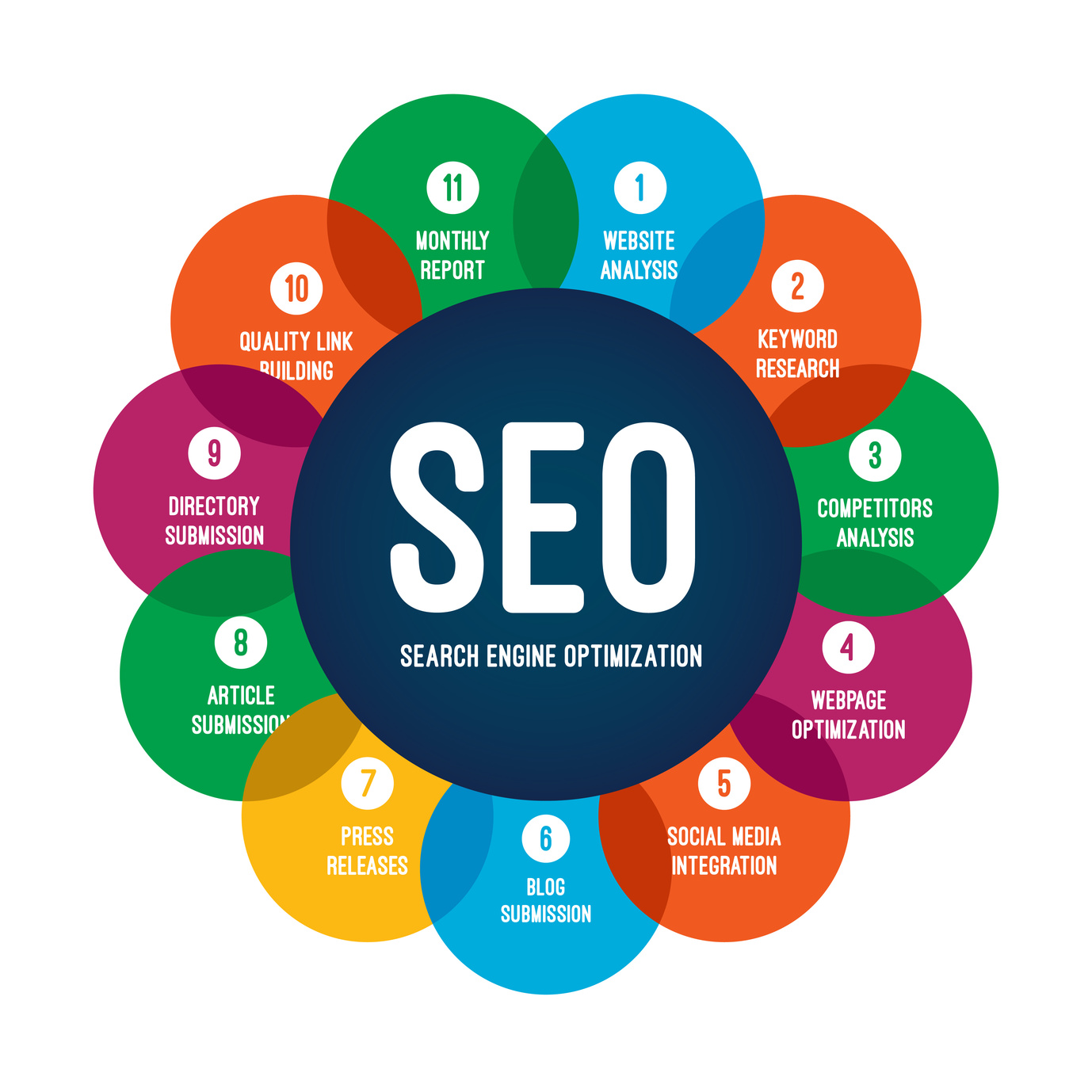
In the ever-evolving digital landscape, the way businesses manage and deliver content is undergoing a significant transformation. One of the most notable shifts is the rise of headless or decoupled CMS—a content management system that separates the backend (where content is created and managed) from the frontend (where it is displayed). This approach offers unprecedented flexibility, scalability, and performance, but it also introduces new challenges when it comes to SEO optimization.
For marketers, developers, and content creators, understanding how to use a headless CMS effectively while maintaining strong SEO practices is crucial. This article will guide you through the key considerations, best practices, and strategies for optimizing SEO in a headless CMS environment.
What Is Headless/Decoupled CMS and Why It Matters
A headless CMS is a content management system that provides content via APIs without a built-in frontend. Unlike traditional CMS platforms like WordPress or Drupal, which come with pre-designed templates and themes, a headless CMS allows content to be delivered to any device, platform, or application, as long as it can consume an API.
This makes it ideal for omnichannel experiences, where content needs to be tailored for mobile apps, smartwatches, AR/VR devices, and more. With the increasing demand for personalized and seamless user experiences across multiple touchpoints, a headless CMS is becoming a must-have for forward-thinking organizations.
However, this flexibility comes with a trade-off: SEO becomes more complex. Traditional CMS platforms often have built-in tools for managing metadata, sitemaps, and structured data. In a headless setup, these functions need to be implemented manually or through custom code, requiring a more hands-on approach to SEO.
How Headless CMS Impacts SEO Performance
The impact of a headless CMS on SEO can be both positive and challenging:
1. Improved Site Speed
One of the biggest SEO benefits of a headless CMS is faster page load times. By decoupling the frontend from the backend, developers can build highly optimized frontends using static site generators (SSGs) like Gatsby or Next.js. These tools pre-render pages, leading to faster load speeds, which is a critical ranking factor for Google.
2. Better Mobile and Voice Readiness
With the rise of voice search and mobile-first indexing, headless CMSs are well-suited to handle these trends. They allow for customized content delivery based on device capabilities, ensuring that your content is optimized for voice assistants, wearables, and other emerging technologies.
3. Enhanced Content Flexibility
Headless CMSs enable modular content creation, allowing content to be reused across different channels. This not only improves efficiency but also helps maintain consistent SEO signals across all platforms.
4. Greater Control Over Metadata and Structured Data
While traditional CMSs offer plugins for SEO, headless systems require developers to implement structured data markup (like Schema.org) directly into the frontend. This gives teams full control over how their content is interpreted by search engines.
5. Potential for Higher Domain Authority
By delivering high-quality, optimized content to multiple platforms, a headless CMS can help increase domain authority and improve visibility across different search ecosystems.
Step-by-Step Implementation Framework
To successfully optimize SEO for a headless CMS, follow this structured approach:
1. Define or Audit the Current Situation
Before implementing SEO strategies, conduct a thorough audit of your existing content, metadata, and technical setup. Identify gaps in structured data, URL structures, and content quality. Tools like Screaming Frog or Ahrefs can help analyze your current SEO performance.
2. Apply Tools, Methods, or Tactics
Implement the following best practices:
– Use Schema.org markup to enhance rich snippets.
– Optimize metadata (title tags, meta descriptions, and Open Graph tags).
– Leverage CDNs (Content Delivery Networks) for faster asset delivery.
– Implement lazy loading for images and videos to improve page speed.
– Create clean, SEO-friendly URLs that reflect content structure and keywords.
3. Measure, Analyze, and Optimize
Regularly monitor your SEO performance using tools like Google Search Console, Lighthouse, and PageSpeed Insights. Track metrics such as:
– Organic traffic
– Click-through rate (CTR)
– Average time on page
– Keyword rankings
Use A/B testing and analytics to refine your strategies and ensure continuous improvement.
Real or Hypothetical Case Study
Let’s consider a hypothetical scenario involving a global e-commerce brand transitioning from a traditional CMS to a headless solution.
Background: The company had a slow-loading website with poor mobile performance, resulting in low organic traffic and high bounce rates.
Implementation Steps:
– Migrated to a headless CMS (e.g., Hygraph).
– Used a static site generator (Gatsby) to build a fast, responsive frontend.
– Implemented structured data for product listings and reviews.
– Optimized images using WebP format and lazy loading.
– Created an XML sitemap and submitted it to Google Search Console.
Results:
– Page load speed improved by 60%.
– Organic traffic increased by 40% within six months.
– Bounce rate decreased by 25% due to better user experience.
– Featured snippets increased for targeted product queries.
This case study highlights how a well-optimized headless CMS can significantly boost SEO performance.
Tools and Techniques for Headless CMS SEO
Here are some essential tools and techniques to help you succeed with SEO in a headless CMS:
- Schema.org – For structured data markup.
- Google Search Console – For monitoring indexing and crawl errors.
- Lighthouse – For performance and accessibility audits.
- Gatsby or Next.js – For building fast, SEO-friendly static sites.
- Cloudflare – For CDN and security optimization.
- React Helmet – For managing metadata in React-based frontends.
These tools can help streamline your SEO efforts and ensure your headless CMS is fully optimized for search engines.
Future Trends and AI Implications
As AI and voice search continue to shape the future of SEO, headless CMSs are well-positioned to adapt. Here’s what to expect:
- Voice Search Optimization: With more users relying on voice assistants, headless CMSs will need to support natural language processing (NLP) and conversational content.
- AI-Powered Content Creation: Tools like Jasper or Copy.ai can help generate SEO-optimized content quickly, which can be integrated into a headless CMS workflow.
- Personalization at Scale: Headless CMSs will enable more personalized content delivery based on user behavior and preferences, improving engagement and SEO performance.
To stay ahead, focus on agile SEO strategies and invest in AI-driven analytics to understand user intent and optimize content accordingly.
Key Takeaways
- Headless CMSs offer greater flexibility and performance but require a more hands-on approach to SEO.
- Structured data, metadata, and URL optimization are critical for success.
- Faster load times and mobile readiness improve both user experience and search rankings.
- Tools like Gatsby, Cloudflare, and Lighthouse can help streamline your SEO efforts.
- Future-proof your strategy by preparing for AI, voice search, and omnichannel content delivery.
Meta Title: How to Use Headless/Decoupled CMS and Optimize Its SEO Effectively
Meta Description: Learn how to leverage a headless CMS for SEO success, including best practices, tools, and real-world examples.
SEO Tags: #HeadlessCMS #SEOOptimization #DigitalMarketing #ContentStrategy #TechnicalSEO
Internal Link Suggestions:
– [Parameter #1]: Understanding the Role of Structured Data in SEO
– [Parameter #2]: The Impact of Page Speed on Search Rankings
– [Parameter #3]: Mastering On-Page SEO for Modern Websites
External Source Suggestions:
– Google Search Console
– Schema.org
– Lighthouse Documentation











